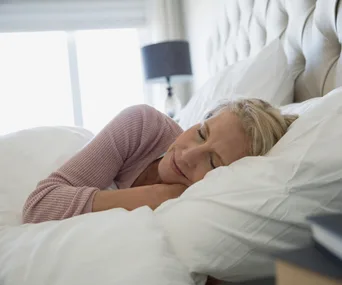The statistics are bleak. Over 17,000 Australian women are currently living with a gynaecological cancer, 105 are diagnosed every week and four women lose their lives daily.
There are seven types of gynaecological cancer – ovarian, uterine (the most common being endometrial), cervical, vulvar, vaginal and two rare pregnancy cancers. Collectively, these cancers are the third most commonly diagnosed in Australian women.
With the exception of the ‘Pap Test’ for cervical cancer, there is no test for gynaecological cancer. The symptoms are unclear, and sometimes non-existent.
So why don’t we hear more about it? Alison Evans, CEO of Australia New Zealand Gynaecological Oncology Group (ANZGOG) says that people feel uncomfortable speaking about women’s gynaecological health.
“The words for a woman’s intimate parts are often considered taboo,” she explains.
But ANZGOG wants to change this. They want to put gynaecological cancers at the forefront of conversation and get women talking to each other about it.
And they’ve started by giving us a term we can use to talk about female anatomy; ‘box’.
“Women told us there needed to be a name for their gynaecological bits that all can embrace,” explains Evans.
“The term ‘box’ has been used in the past to describe a woman’s private parts. But it is also a container used to store something worth preserving or precious.”
Deborah Knight is backing the campaign
Evans says that the box analogy worked well on lots of levels. It’s not just a catchy slogan; simple cardboard boxes have also been integral to campaign.
“The everyday cardboard box worked really well to carry the campaign messaging. A single cardboard box tells a powerful story with statistics about the cancers and women on the sides.
“But when multiplied, a number of boxes makes an even more impactful statement,” she explains.
The campaign was launched in Sydney’s Martin Place last week and used 1743 boxes to represent the women who lost their lives to gynaecological cancer in 2015.
That is a lot of boxes.
Evans says that so far the response has been really positive. “Women with a gynaecological cancer are telling us how appreciative they are that we are finally giving them a voice,” she says.
She also notes that men can also play a huge role in the fight against gynaecological cancer.
“Men of all ages came up and spoke to us about the campaign [during the Martin Place launch].

The #SaveTheBox campaign in Martin Place, Sydney
“Men who had lost a wife, a mother, daughter or sister or even had never understood the number of women losing their lives each year from these cancers,” says Evans.
While ‘Save the Box’ aims to get people talking they also want to raise much needed funds.
Professor Michael Friedlander, the founder of ANZGOG says while the organisation’s body of research has changed treatment practices for women, it needs to step up the pace of research if it’s going to truly make a difference.
“Virtually every advance in cancer survival has been made on the back of clinical trials – research is key to improving the lives of women with gynaecological cancer,” he explains.
There are lots of ways that you can get involved in Save the Box: buy a t-shirt, donate directly or stage a fundraising event. You can even get a money box from ANZGOG to save up your lose change.
‘Save the box’ has already gained a lot of traction with celebrities like Johanna Griggs, Ita Buttrose, Jessica Rowe and Livinia Nixon all lending their voices (and social media accounts) to the cause.
Livinia Nixon is lending her voice
“Just because something is a bit awkward to talk about, doesn’t mean we shouldn’t,” newsreader Jayne Azoppardi posted on Instagram
Likewise, Lavinia Nixon said that she was hesitant to post a photo of herself in the Save the Box t-shirt:
She wrote: “But when I read that 1743 Australian women will die from gynaecological cancer this year, I thought, ‘get over it, Nixon’.”
Find out more at Savethebox.org.au



